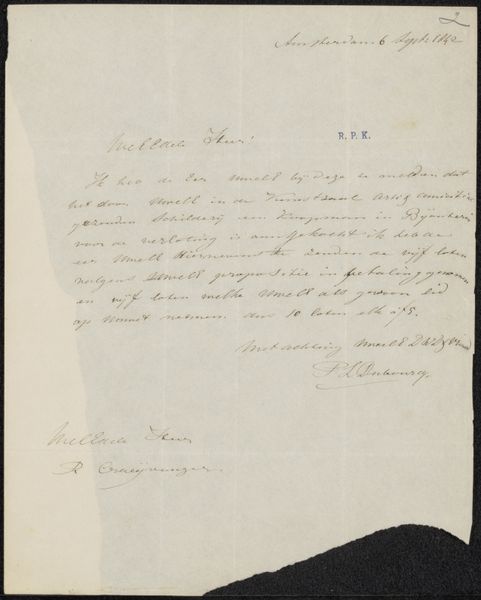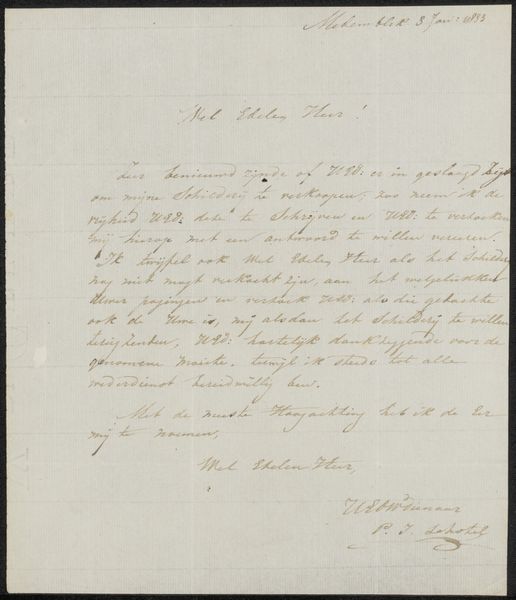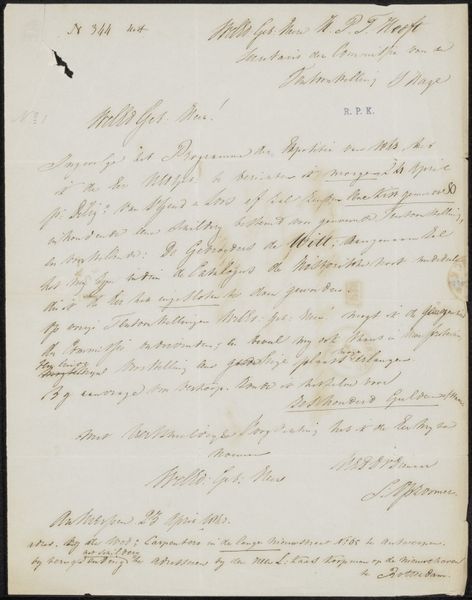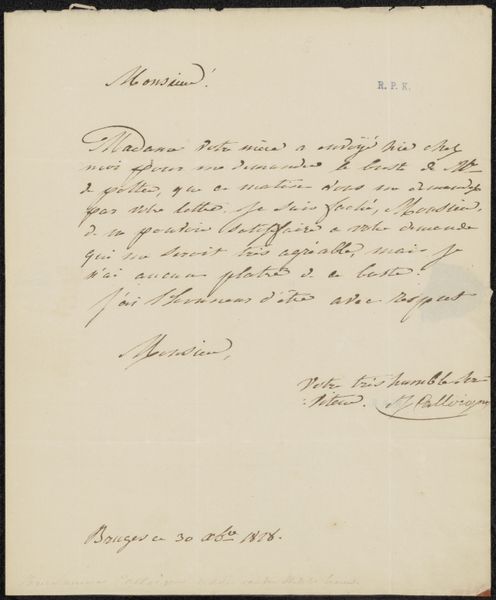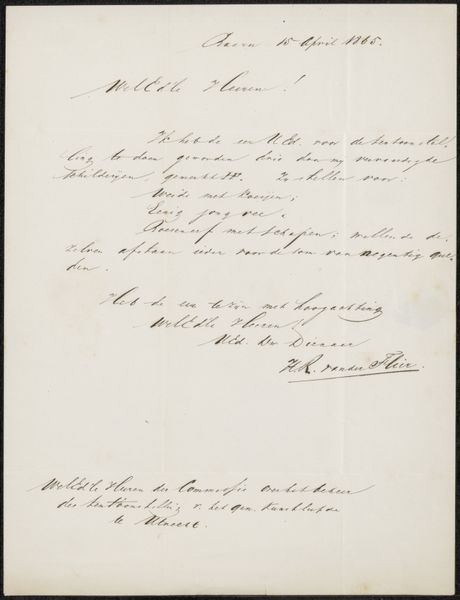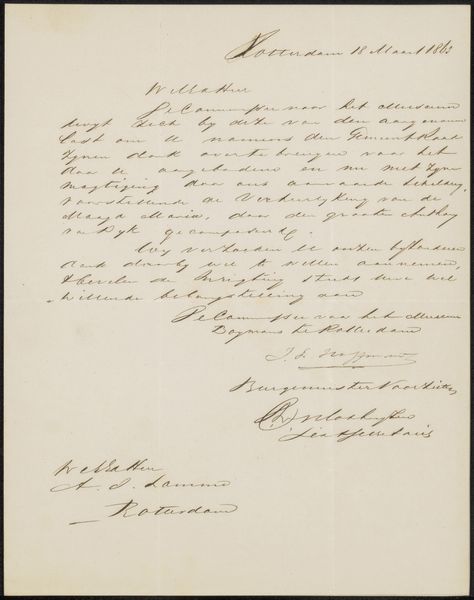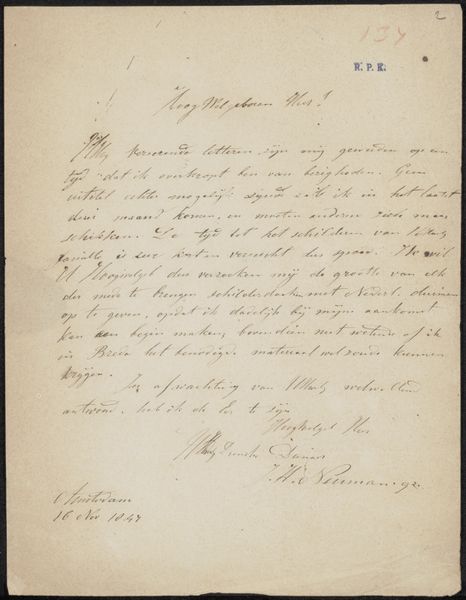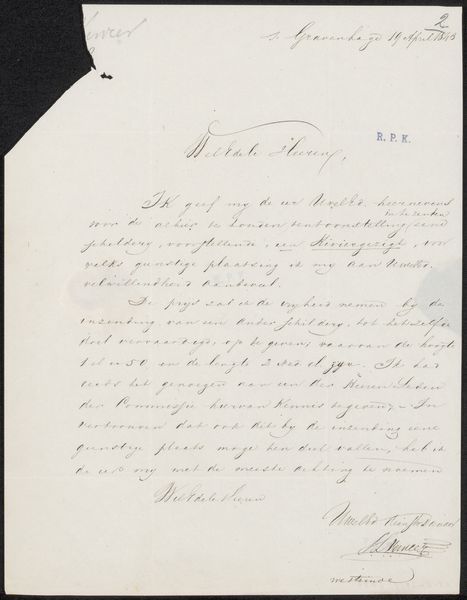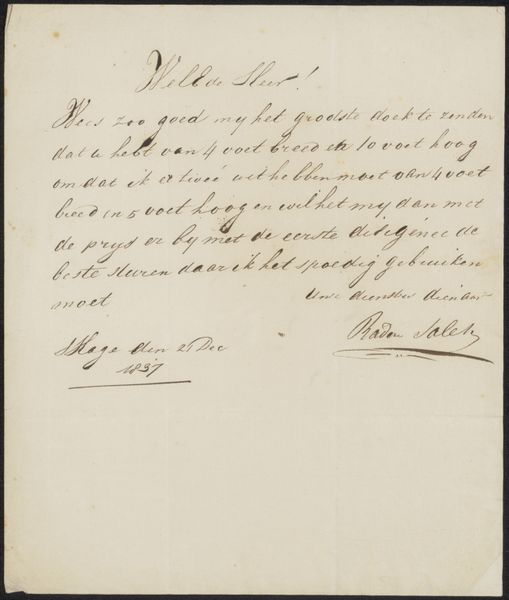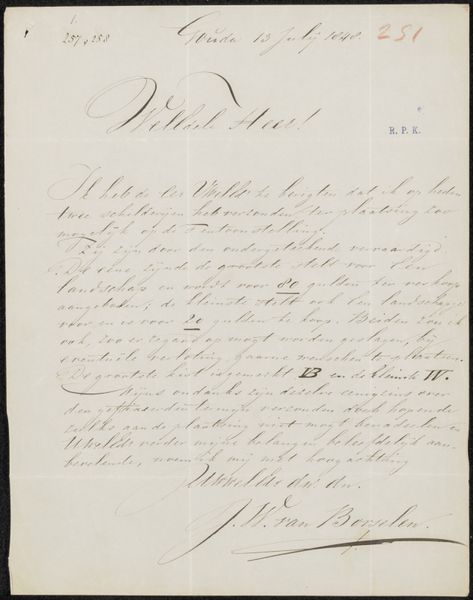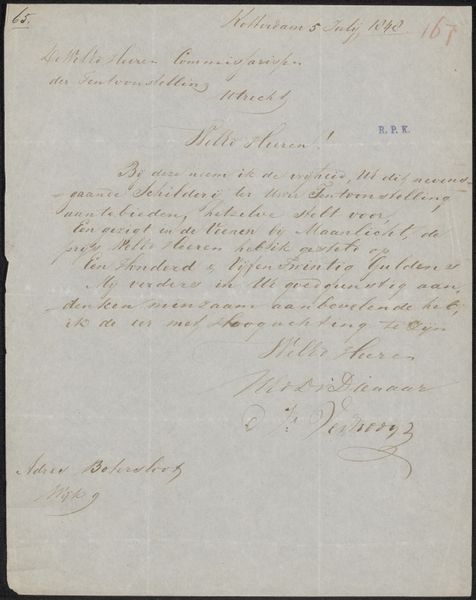
Copyright: Rijks Museum: Open Domain
Curator: Here we have a letter, titled "Brief aan Pierre Louis Dubourcq," crafted by James de Rijk. It's likely from around 1858 or 1859. The delicate piece is rendered in ink on paper. Editor: Immediately, I’m drawn to the visible marks and staining across this paper; it feels incredibly fragile. I'm also quite interested in its pale palette—it whispers more than shouts, doesn't it? Curator: Precisely! The romanticism of the piece lies partly in its intimate nature and its relationship to personal communication. Letters, especially in this era, held significant social and political weight as disseminators of thought and emotion among a relatively small intellectual circle. Editor: It certainly speaks to its time, doesn’t it? The paper itself looks handmade— you can see a laid pattern on close inspection which is characteristic of a traditional production. How would the availability and cost of materials at the time influence someone's output? Curator: Great question! Restrictions undoubtedly affected everything— the size, perhaps the permanence, of the work itself. Think about the relative expense of quality ink. This was a direct exchange, shaped not just by personal intent, but socio-economic constraints too. Editor: And what about the craft itself? This handwriting... it's an art form. You see flourishes but, there are moments where it’s messy where corrections or additions would’ve altered the composition dynamically. That act of composing, physically, adds another layer to its materiality. Curator: Absolutely. We tend to separate 'high art' from functional pieces like letters but that ignores the artistic choices embedded in the everyday. Consider the deliberate formation of each word here— a personal performance aimed toward its specific recipient within its time period, to ensure his recognition and favor. Editor: It reminds us that even something functional carries the fingerprints of its time, reflecting both aesthetic choices and tangible realities. We're looking at not only words on paper, but also labor, intention, and available matter meeting. Curator: Precisely. It prompts a consideration on the value of ephemeral or "functional" art in constructing histories of visual, political and social culture of an era. Editor: So, we’ve moved from the intimate and fragile material in front of us into an exchange charged with cultural implications! Curator: Yes, these brief considerations and the impact of letters underscore their roles in shaping interpersonal relationships and cultural discourses of its period, long after they're sent, they live and shape perceptions.
Comments
No comments
Be the first to comment and join the conversation on the ultimate creative platform.
